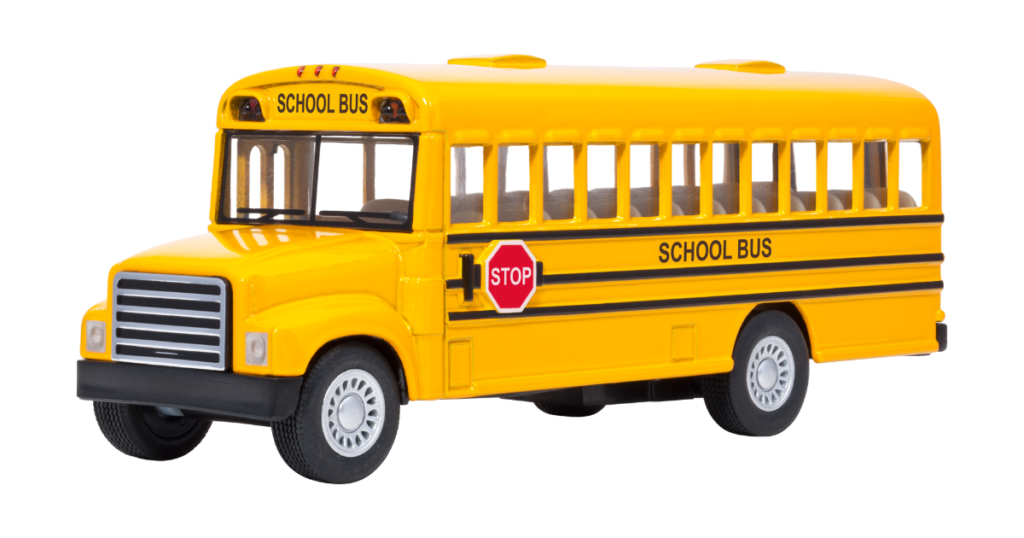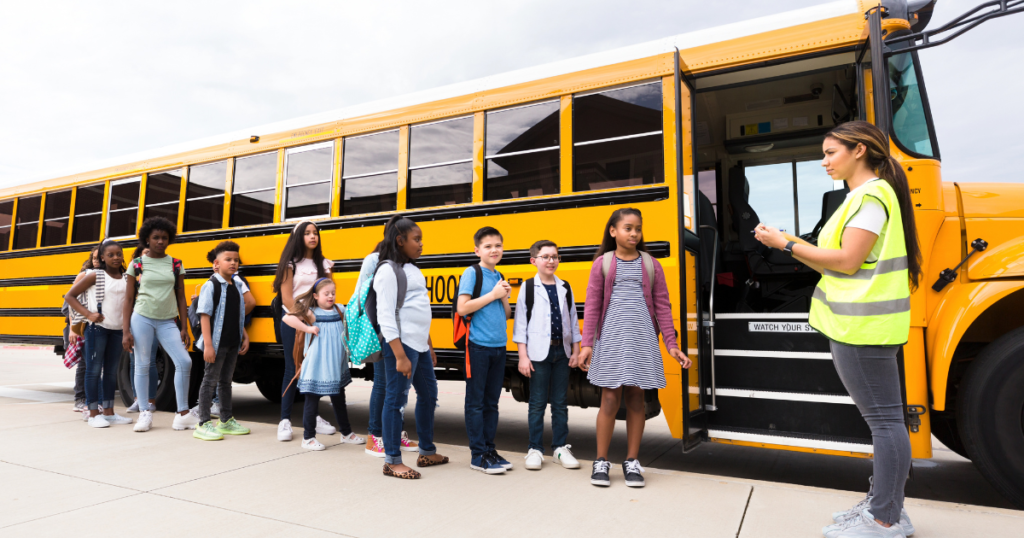Determining the number of kids that can safely fit on a school bus is vital for planning practical and secure school transportation. It involves more than just counting seats; it requires a deep understanding of bus types, safety regulations, and seating configurations. Whether a small Type A bus or a larger Type C, each model has specific capacity limits to ensure every child’s safety during their commute.
This exploration will explore the factors that dictate these capacities, providing insights into how schools can optimize their transport services while adhering to safety standards.
Introduction to School Bus Capacities
Navigating the logistics of school transportation begins with understanding the capacities of different school buses. These capacities are crucial not only for planning efficient routes but also for ensuring the safety and comfort of students. School buses are categorized into several types, each with distinct size specifications and seating arrangements to accommodate various students. For instance, Type A buses, the smallest in the fleet, are ideal for shorter routes with fewer students. In contrast, Type C buses designe for larger groups and commonly used for regular daily routes due to their higher capacity.
The number of children a school bus can hold influence by multiple factors. That including the physical size of the bus, seat configuration, and applicable safety regulations, which might differ from one state to another. Each seat is accounted for under strict guidelines to maximize safety without sacrificing comfort. Understanding these variables helps school districts effectively manage their resources, ensuring that every child has reliable and safe transportation to and from school. This reinforces the role of school buses as a critical infrastructure in educational success.
Read also: How Much Sleep Do School-age Children Need?
About School Bus Types

School buses are categorized into different types based on their size, capacity, and design, each tailored to meet specific transportation needs within school districts. These classifications ensure that each bus is suitable for its intended use, from navigating narrow urban streets to transporting students over longer distances. Here’s a breakdown of the primary types of school buses:
- Type A School Bus: These are the most minor units and are divided into two subcategories, Type A-1 and Type A-2. Type A-1 buses are designed to carry more than 10 passengers but less than 15, while Type A-2 buses can transport 15 to 30 passengers. They are typically used for more minor routes, special needs transportation, or areas where larger buses cannot easily manoeuvre.
- Type B School Bus: These buses are more significant than Type A buses and are characterized by a body constructed on a cutaway front-section vehicle with a left-side driver’s door. This design allows accommodation of 30 to 36 passengers. Their larger size makes them suitable for medium-sized routes.
- Type C School Bus: Also known as “conventional” school buses, Type C buses have a distinctive long-nosed design, with the engine in front of the windshield and the entrance door behind the front wheels. They are built on a full truck chassis and can carry 36 to 78 passengers, making them the most common type used for regular routes to and from schools.
- Type D School Bus: These buses are the largest in the fleet. They feature a flat-front design and an engine located either in the front or the back. They can carry more than 60 passengers. Due to their high capacity and comfortable seating arrangements, Type D buses are ideal for longer trips and large groups of students.
Key Factors Influencing Capacity
The capacity of a school bus, or the number of students it can safely transport, is influenced by various crucial factors. Understanding these elements is essential for school transportation planners and administrators to ensure efficiency and safety. Here are the main factors that affect school bus capacity:
- Bus Design and Size: The physical size of the bus and its design, including the layout of seating, directly impacts how many passengers it can accommodate. Larger buses can carry more passengers, whereas smaller buses suit fewer students.
- Seating Configuration: The arrangement of seats within the bus plays a crucial role. Buses with bench seating might accommodate more students than those with individual seats. Additionally, the size of the seats and the amount of legroom provided can affect the number of students who can sit comfortably and safely.
- Age and Size of Passengers: Younger, smaller children require less space than older, larger students. Therefore, buses transporting elementary students can often accommodate more passengers than high school students.
- Safety Regulations and Standards: Federal and state safety regulations dictate the maximum capacity of school buses to ensure the safety of passengers. These rules might specify the total number of passengers and how they should be seated to avoid overcrowding and ensure each child has a seat belt if required.
- Operational Guidelines: School districts may have operational guidelines impacting bus capacity. These guidelines could be more stringent than federal or state requirements and consider local concerns such as trip duration, the frequency of stops, and the physical demands of specific routes.
- Accessibility Requirements: Buses equipped to accommodate students with disabilities, including wheelchair access, may have reduced capacities due to the space needed for accessibility features. These modifications are vital for ensuring that all students can travel safely but do impact overall passenger numbers.
How many kids can legally fit on a school bus?

The legal capacity of school buses varies by bus type and is further influenced by specific local and state regulations. Type A buses, which are the smallest, are divided into Type A-1, accommodating up to 14 passengers, and Type A-2, which can hold between 15 and 30 passengers. Medium-sized Type B buses typically carry between 30 to 36 passengers. The most common are Type C buses, known for their conventional design with a capacity ranging from 36 to 78 passengers. Depending on their configuration, the largest Type D buses can transport 54 to 90 passengers.
These capacities ensure that each child has adequate seating and that overcrowding does not compromise safety. State and local laws may dictate specifics, such as the maximum number of occupants per seat and whether seat belts are required. Safety regulations emphasize staying within these capacities to maintain the stability and operational safety of the bus. Compliance with these regulations, with regular vehicle inspections and proper maintenance, ensures that school buses remain safe environments for transporting students, adhering to legal standards and community expectations for safety.
Breakdown of School Bus Capacities
Understanding the different capacities of school buses is crucial for planning efficient and safe transportation for students. Here’s a detailed breakdown of the capacities across various types of school buses:
Small Type A Buses
Type A buses are the smallest in the school bus family and are split into two subcategories: Type A-1 and Type A-2. Type A-1 buses are designed to accommodate fewer than 15 passengers, making them ideal for small groups or specialized transportation needs, such as services for students with disabilities. Type A-2 buses, on the other hand, can carry between 15 and 30 passengers. Their compact size makes them perfect for navigating narrow streets and areas with limited parking.
Medium Type B Buses
Type B buses are a step up in size and capacity from Type A buses. These medium-sized buses can typically hold between 30 to 36 passengers. Built on a cutaway van chassis with a distinct front-section vehicle design, Type B buses offer more room and comfort than Type A buses. They are often utilized for routes that do not require the larger Type C or D buses but still need to accommodate a moderate number of students.
Larger Type C & D Buses
Type C buses, commonly known as conventional school buses, have a long nose design with the engine in front of the seating area. They can accommodate between 36 and 78 passengers. The entrance door is located behind the front wheels, facilitating more accessible and safer boarding and alighting for students.
Type D buses are the largest type, capable of carrying more than 60 passengers and, in some configurations, up to 90 passengers. They have a flat-front design and can have the engine positioned at either the front or back of the bus. Type D buses provide ample space and comfort, which makes them suitable for longer trips and larger groups of students.
Type C and D buses are essential for larger school districts requiring transportation for numerous students across extensive routes. They are engineered to ensure safety and handle varying passenger loads efficiently, making them a reliable choice for daily commutes to and from school.
Safety Regulations for School Bus Capacity
Safety is paramount when transporting students, and several regulations specifically address school buses’ capacity and operational standards to ensure maximum safety. These regulations are designed to prevent overcrowding and ensure every child has a safe and secure ride to and from school. Here’s an overview of the vital safety regulations concerning school bus capacity:
Federal and State Safety Standards
In the United States, the National Highway Traffic Safety Administration (NHTSA) sets federal safety standards for school buses, including capacity-related ones. These standards are incorporated into state regulations, which can vary but generally adhere closely to federal guidelines to ensure consistency.
Seating and Capacity Guidelines
Safety regulations stipulate that each student must have a seat on the bus. The standard seat width is approximately 39 inches, typically accommodating three more minor elementary school children or two older students per seat. This helps determine the bus’s total capacity, ensuring that it is not exceeded to maintain safe travel conditions.
Emergency Exits
Regulations require that school buses have a specific number of emergency exits based on the seating capacity and bus size. These exits must be marked and fully functional at all times to provide a quick evacuation route in case of an emergency.
Seat Belts and Safety Equipment
While federal law does not mandate seat belts on all school buses, some states have enacted laws requiring seat belts on buses. When present, regulations often require that all passengers use seat belts while the vehicle is in operation. Moreover, school buses are equipped with other safety features such as padded seats, rollover protection, and high crush standards to enhance safety in case of an accident.
Weight Distribution
Safety regulations also consider the bus’s weight distribution. Proper weight distribution is crucial for maintaining the vehicle’s balance and stability, especially when navigating turns and different terrains. This is why the capacity guidelines specify the number of passengers and consider the average weight per passenger, ensuring the bus is manageable.
Regular Inspections and Maintenance
School buses must undergo regular inspections and maintenance checks to adhere to safety standards. These inspections ensure that all parts of the bus, especially those related to safety, like brakes, tyres, and emergency exits, are in good working order. Regular maintenance helps prevent accidents caused by mechanical failures.
How Bus Capacities Affect School Planning?

The capacity of school buses plays a critical role in school planning, influencing everything from daily schedules to budget allocations. Effective management of bus capacities can lead to more efficient operations, safer transportation, and cost savings for school districts. Here are the primary ways in which bus capacities impact school planning:
Route Optimization
The number of students a bus can carry directly affects how school districts plan and optimize bus routes. Planners must consider the capacity to ensure that each route is efficient in terms of time and fuel consumption while accommodating all students who need transport. Efficient route planning can reduce the required buses, decreasing operational costs.
Schedule Coordination
School start and end times may need to be staggered to accommodate the bus capacities. Suppose a school district has a limited number of high-capacity buses. In that case, it might need to schedule different start times for schools or grade levels to ensure all students are transported safely without exceeding bus capacities. This coordination is crucial to manage the flow of buses to and from schools and to prevent bottlenecks at bus loading zones.
Budget and Resource Allocation
The size and number of buses a district needs will significantly impact its budget. Larger buses are more expensive to purchase, operate, and maintain. School districts must balance the cost against the capacity requirements, potentially opting for more medium-sized buses rather than a few large ones, depending on the spread and number of students throughout the district.
Emergency Preparedness
Understanding bus capacities is also crucial in emergency planning. Knowing exactly how many students can be transported at one time in an evacuation or emergency allows schools to effectively plan their emergency response strategies and drills, ensuring that they can evacuate all students quickly and safely if needed.
Compliance with Legal and Safety Standards
School districts must adhere to state and federal regulations concerning transportation, including maintaining safe bus capacities. Planning around these legal requirements ensures compliance and avoids penalties. It also promotes the safety of students, which is a primary concern for any educational institution.
Impact on Extracurricular Activities
Bus capacities also affect schools’ ability to support extracurricular activities. Having sufficient capacity is vital for schools that rely on buses to transport students to events, matches, and competitions. This may require scheduling and resource allocation to ensure activities stay within the available transportation capacity.
What happens if there is a breakthrough in the legal capacity of school buses?
Exceeding the legal capacity of school buses can have several detrimental effects, encompassing safety concerns, legal issues, and broader operational implications. Here are the key points to consider:
- Increased Risk of Accidents:
- Overloading affects the bus’s handling and braking capabilities.
- The added weight can compromise stability and manoeuvrability, raising the risk of rollovers or collisions.
- Compromised Safety Features:
- Safety features such as seat belts and structural reinforcements are designed for specific capacities.
- Exceeding these capacities may cause these features to misfunction, diminishing their effectiveness in protecting passengers.
- Legal and Financial Consequences:
- Violating transportation regulations by overloading can result in fines and penalties.
- Legal actions could be pursued if overloading leads to accidents, further increasing financial liabilities.
- Reputational Damage:
- Safety compromises can damage the trust and confidence parents, and the community have in a school or bus service.
- Negative publicity can affect the perception of the institution’s commitment to student safety.
- Potential for Personal Injury Claims:
- Accidents resulting from an overloaded bus can lead to personal injury claims.
- These legal battles might result in high compensation payouts and long-term financial burdens on the responsible entities.
- Operational Disruptions:
- Overloading issues might necessitate operational reviews and adjustments.
- This could disrupt the school schedule and require additional resources to address capacity and safety protocols.
FAQ
What determines the capacity of a school bus?
- The capacity of a school bus is primarily determined by the bus size and type (e.g., Type A, B, C, D). Additional factors include the design of the seats, local and state regulations, and specific safety standards that dictate how many students can safely fit on each bus.
How is the seating capacity of a school bus calculated?
- Seating capacity is usually calculated based on the number of seats and the expected number of students per seat. For example, seats in school buses are often designed to accommodate three younger children or two older students each, depending on space and safety regulations.
Are there legal penalties for exceeding school bus capacity?
- Yes, exceeding school bus capacity can lead to legal penalties, including fines and sanctions against the school district or bus company. These penalties are enforced to ensure safety and compliance with transportation laws.
How can schools ensure they stay within bus capacity?
- Schools can ensure compliance by regularly reviewing their transportation needs and bus routes, conducting frequent checks of bus capacities, and training drivers to understand the importance of staying within these limits.
Conclusion
In conclusion, adhering to the legal capacities of school buses is not merely about following regulations—it is a fundamental aspect of ensuring the safety and well-being of students. Overloading school buses can lead to increased risks of accidents, compromised safety features, and severe legal and financial consequences. It also jeopardizes the trust parents and the community place in educational institutions and transportation providers. School districts and bus operators must prioritize compliance with capacity guidelines to prevent these risks and uphold their responsibility to provide safe, reliable transportation. By doing so, they protect students, avoid potential liabilities, and maintain their reputations as safe and caring educational environments. This commitment to safety and adherence to legal standards is essential for fostering a secure and conducive learning atmosphere for students.















